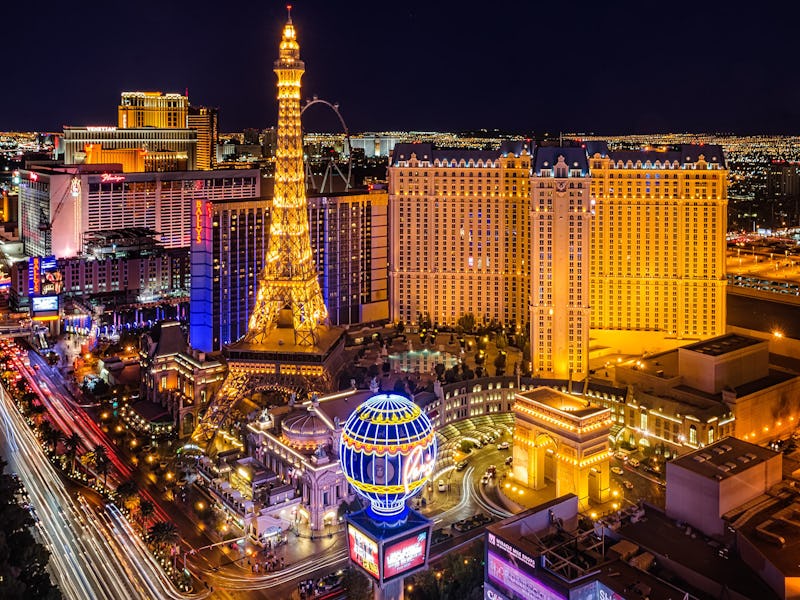
Here at ‘Inverse’, we like to explore horrifying, if unlikely, scenarios, which is why we’ve publicly mulled what would happen if Cleveland’s corpses rose from their graves, if a Tyrannosaur got loose in Minneapolis, and if there was a nuclear meltdown in Kansas. This week, we smash every light on the strip.
A handful of luciferous anecdotes aside, your average bulb or neon tube is designed to not explode. A dropped or defective bulb or, in very rare cases, a bulb that’s twisted too tightly in its socket so that electrical arcs weaken the glass might shatter, but those are relatively rare instances. Still, imagine if you will a pressure change or surge shattered every bulb on the Las Vegas Strip. People would immediately start to upload photos to Instagram, but what would happen after that?
How many lights are we talking about? The number that gets bandied about is 15,000 miles of neon (though that number doesn’t come from a trusted source so don’t put too much faith in it). It’s worth noting that Vegas’ classic neon buzz is also fading into an LED glow: The city just replaced 42,000 street lights with LEDs — not all of these are on the strip — and LEDS have conquered the marquee, with proponents citing energy efficiency and a wider range of colors. On Fremont Street alone, a part of downtown adjacent to the strip, there are 12 million lights.
Neon tubes typically range from 8 mm to 15 mm; given 15,000 miles of cylindrical tubing (and the formula for the surface area of a cylinder), that means 0.67 square miles of glass from the neon lights alone. Transport that to New York City, and you’d be able to cover more than half of Central Park in a sheet of glass. As far as the non-neon bulbs go — and we’ll conservatively estimate that, if Fremont Street has the highest density of 12 million lights for its relatively smaller length, there are 24 million all told — pedestrians might want closed-toed shoes.
And what about the number of skulls upon which this glass rain will fall? In 2009, an analyst — who wanted to measure how many eyeballs Las Vegas billboards get — hired a handful of University of Nevada, Las Vegas students and armed them with click counters. At peak pedestrian traffic (for March 2009, this was 8 to 9 p.m.) 40,000 people were strolling along Las Vegas Boulevard.
And, yes, the odds of injury would be extremely high. The strip runs for about 4.2 miles through Vegas, though at, say, roughly 200 feet wide where glass might fall to the sidewalk and roads, that’s 0.16 square miles — so there’s enough glass to cover the strip, and the heads of the people walking below, four times over.
Should a single fluorescent bulb or neon light break, the Environmental Protection Agency offers a few tips on clean up: Vacate the room for 10 minutes, sweep instead of vacuum to make sure the mercury in the bulbs doesn’t spread, wear gloves. The tiny amount of inert noble gas in a neon sign, likewise, isn’t considered a tremendous health risk. But what separates a trivial accident from an environmental disaster is scale. Though a fluorescent bulb might have 4 or 5 milligrams of mercury, and a few million busted bulbs means there will be hazmat suits.
Meanwhile, in Reno, casino owners would be jumping for joy.